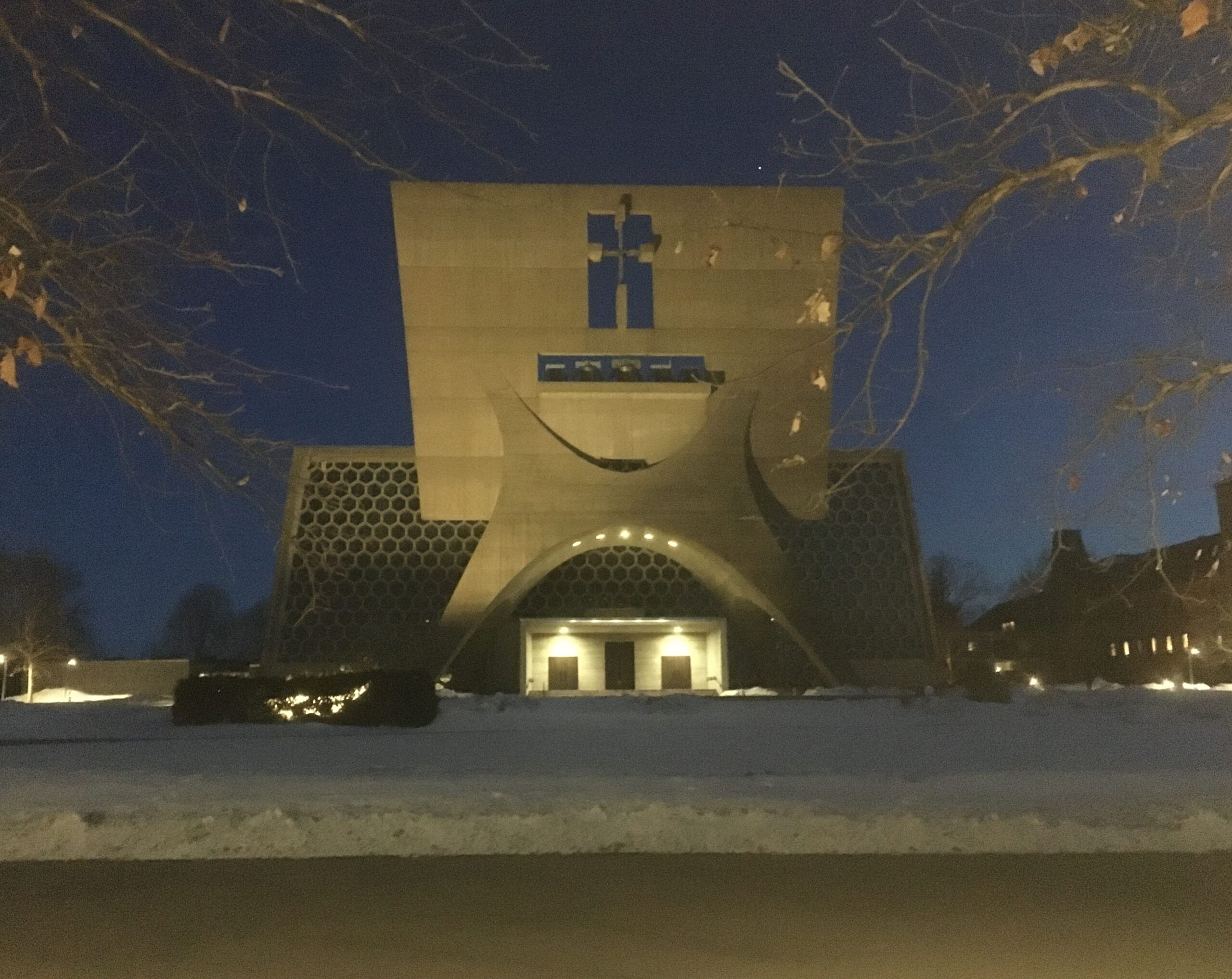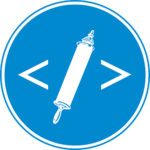By Geert Jan Veldman MA, Zwolle
It happened often in conversations in the more southern parts of the United States of America, that a conversation partner asked me something like “Why on earth you want to visit one of the coldest parts of mainland USA?”, when I mentioned that I had spent time in the northern state of Minnesota, and that I fully enjoyed it. But to an enthusiast of manuscripts, the Hill Manuscript Museum and Library (HMML) in Collegeville Minnesota has to be reason enough to visit this state (even though last winter was one of the snowiest ever recorded – it ranked second all-time in nearby St. Cloud.
HMML
HMML is situated in the Alcuin Library of St John’s University, a Roman Catholic liberal arts college of which the campus is on the site of the Benedictine Abbey of St John in Collegeville. From 1964 onwards the Benedictine monks decided to preserve “at-risk manuscripts,” and they started with photographing manuscripts from Austrian monasteries. During the years this endeavour extended to manuscripts from as diverse places as Ethiopia, Indonesia, or Mali (Timbuktu). This resulted in forming what is HMML. By now a huge repository of more than 300,000 imaged manuscripts is created, these manuscripts are available to study in one of the study rooms of the library. Lots of these imaged manuscripts are visible in superb quality in the “reading room” of the virtual Hill Manuscript Museum and Library (vHMML). Among the manuscripts available, are thousands of Syriac manuscripts ranging from illustrated Evangelaries, to philosophical treatises, from dictionaries to —for instance— translations of De imitatio Christi of my fellow townsman Thomas à Kempis.
In the period of my visit (March/ April 2023) the staff of HMML proved to be gracious hosts in allowing me to study digitized Syriac manuscripts on site and to use its archives and library. The aim of the visit, which was financially supported by HMML’s Hickman Stipend and the Peshitta Institute, was to expand an already existing database built for the Linking Syriac Liturgies-project, funded by DANS (Data Archiving and Networked Services). This database comprises digitized descriptions of more than seventy of Syriac Old Testament biblical manuscripts and lectionaries, and allows its user to study the liturgical use of the Syriac Peshitta Old Testament
Lectionaries
Basically, a lectionary is a sort of tool developed in order to help a reader or celebrant in a church or monastery to read the correct pericope according to a given rite for a particular Sunday of Christian feast day. The earliest dated example of such a lectionary in Syriac, is the 824 A.D. lectionary from the Church of Ahudemmeh in Tagrit (Iraq), now London, British Library Add. 14,485-14,487. Prior to the “lectionary,” pericopes were already highlighted in other sorts of manuscripts in order to ensure that a user is perfectly able to find and read the right pericope for a given opportunity. These other manuscripts were either 1) biblical manuscripts (comprising of complete biblical books or corpora) containing notes in between the main biblical text or annotations in the manuscript’s margins, or 2) especially crafted lists of pericopes (in which, most of the time, only the first and last words of the pericopes are written down, introduced by the name of the biblical book from which the pericopes are taken, all of them are grouped according to the ecclesiastical year).
The results of these three methods of delineating an Old Testament pericope for the Syriac church services were studied in depth by Dr Konrad Jenner (various publications, among which his 1993 Leiden Dissertation). Jenner’s work was based on microfilms part of the Peshitta Institute Archives (Leiden, from 2014 onwards based at Vrije Universiteit Amsterdam). The 38 lectionaries used for the DANS-funded project were also part of the microfilm archives of the Peshitta Institute. Its contents were written out with great scrutiny in the 1970s by Dr Willem Baars (some additional work has also been done by drs Maarten van Vliet). Baars’ output included several binders containing lists of pericopes of each individual lectionary presented in the order of the ecclesiastical year, and a collection of reference cards in which the pericopes are listed per individual bible book.
Both resources (Jenner’s Dissertation and the notes and binders by Willem Baars) form the core of the database, its contents are descripted in Van Peursen and Veldman 2020. The database contains lists of pericopes taken from 39 biblical manuscripts (listed in Jenner’s attachment) and 38 lectionaries, and comprises more than 8,000 pericopes. These pericopes are part of lectionaries and bibles which stem from the four major Churches which celebrated mass at a given time in the Syriac language (the miaphysite Syriac Orthodox Church, the dyophysite Church of the East, the Byzantine Melkite Church and the Maronite Church). The pericopes were taken from manuscripts spanning a period of at least 1000 years (the oldest manuscript being from the 5th-century Pentateuch [London, British Library Add. 14,425, copied in 464 A.D., which contains later liturgical notes in the margins] and the youngest from the 16th century [among those VU Library Amsterdam, manuscript XV.05069, dated to 1519 A.D.]). But with repairs and additions to several lectionaries (the additions are dated up till the 18th/19th century), this connects the digitized materials to the liturgical practises of the Syriac-speaking Churches of today.
Results
Most of the microfilms in the Peshitta Institute Archives were obtained during visits of Professor Piet de Boer (Leiden) and Baars in the 1960s and 1970s with some later acquired microfilms. With the recent digitization of HMML more materials were discovered. Most of these discovered Peshitta biblical manuscripts and lectionaries are of later date, but are nonetheless important and of a certain age to consider studying its contents. The DANS-database was supplemented by the description of several lectionaries in order to obtain a complete survey of lectionaries up till the 16th-century. In total five lectionaries digitized by HMML were studied (the oldest was a 12th-century miaphysite lectionary from Mardin (Turkey)): of them the pericopes were established with help of the Peshitta Institute’s Vetus Testamentum Syriace, the introduction to each pericope was written down, the Syriac name given to the Sunday of liturgical feast was noted, and the Biblical version from which the pericope was taken was established. In total more than 1,000 entries were added to the already existing 8,000 pericopes in the DANS-database.
Furthermore, a list of all available lectionaries was extended. This extension is based upon the digitized manuscripts in vHMML, but also on recorded descriptions found in the archives of two important scholars of Syriac Christianity, of whom a lot of paperwork and microfilms were deposited in the HMML-archives, Arthur Vööbus and William Macomber (both scholars have visited monastic libraries and individual manuscript collections in the Middle East in the early second part of the last century in order to describe, photograph and study its contents). This list will accompany an upcoming article by Jenner and myself on Syriac Old Testament Lectionary Manuscripts for Brill’s Textual History of the Bible.
The visit ended on Good Friday, right in the middle of the Paschal Triduum, its services following the Benedictine tradition and the daily Liturgy of the Hours of the Abbey provided an opportunity to experience something of what users, readers, and hearers must have experienced on moments when the Old Testament lectionaries were opened and its text was read out loud.


